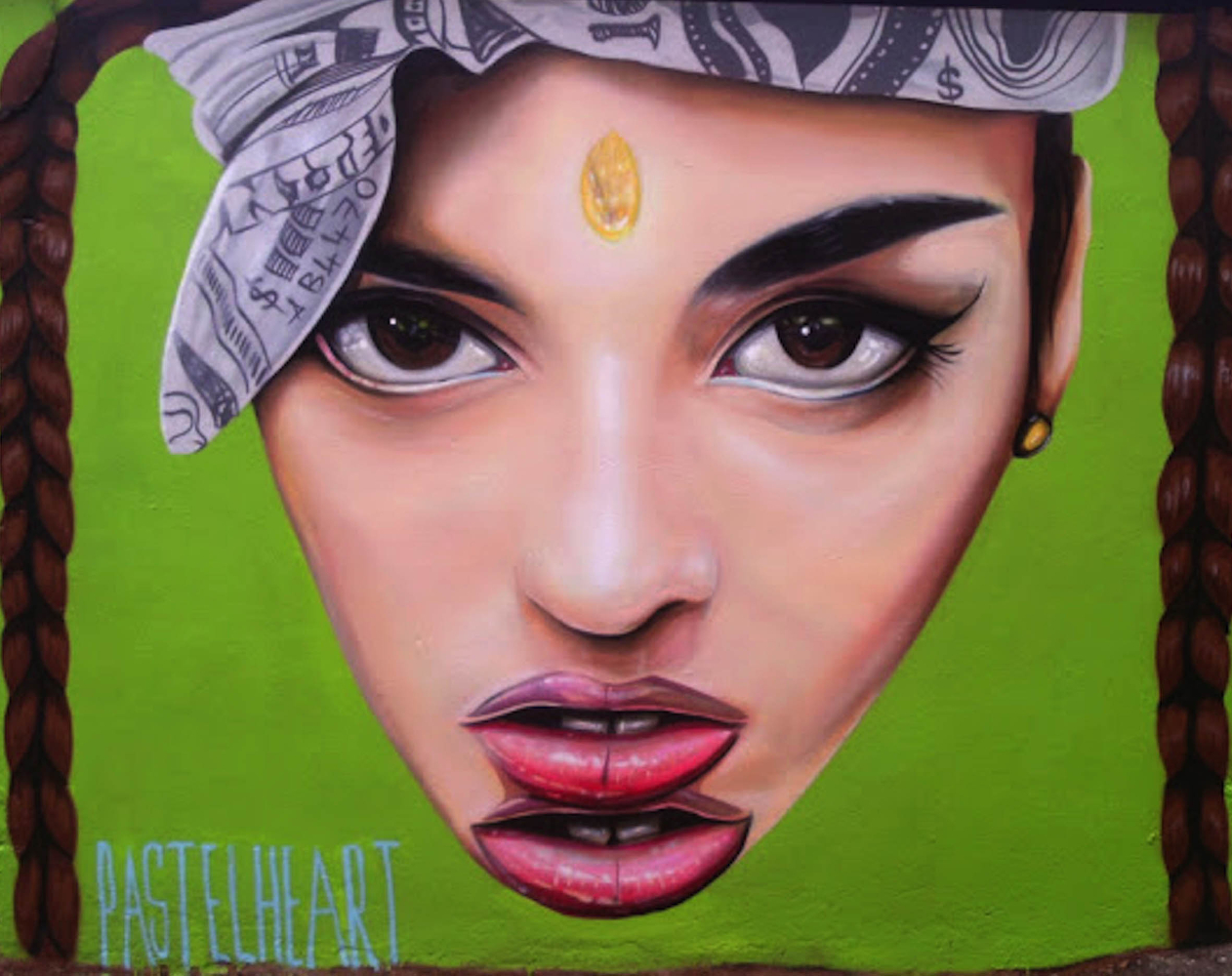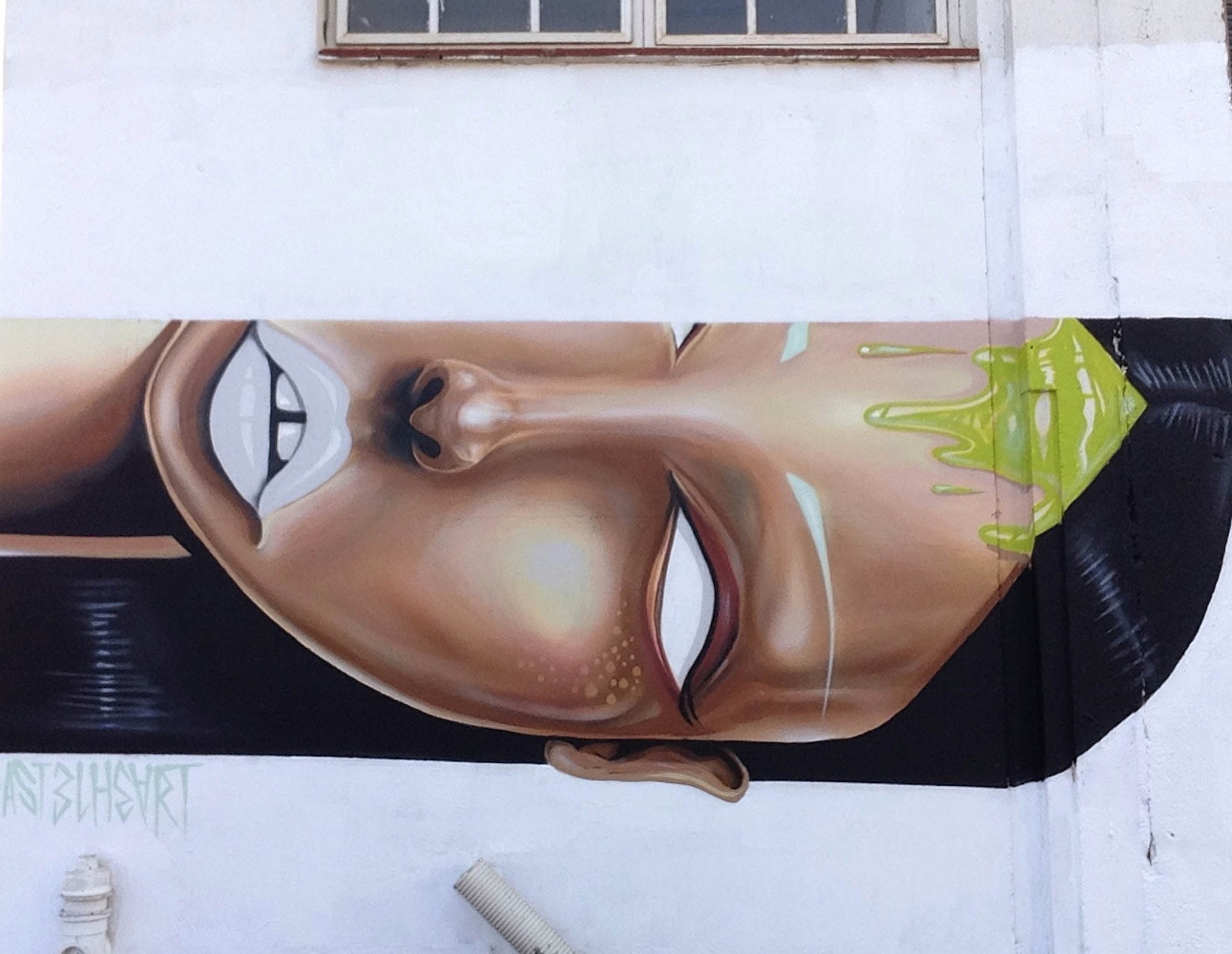When not eating bunny chows in his hometown of Durban, Pastelheart is out on the streets painting walls. The platinum-dyed hair and fierce dark eyebrows of this young street artist reflect his enigmatic nature.
But somewhat at odds with his “club kid” appearance, he is modest about his work, saying the Durban street-art scene is close-knit and he has yet to discover the reasons for his notoriety within the group.
At just 24 years of age, Pastelheart embodies both the reckless spirit of youth and the earnest conviction of an artist passionate about his work. “I am an artist”, he says. “I just paint.”
Instead of painting a wide range of subject matter, Pastelheart sticks almost to a singular image in his work – lips. In some of his paintings, giant cyber-coloured, moist and alluring disembodied lips pout seductively at the street. In other paintings, they dominate the stylised face of a female character, which recurs in different representations of his work.
These figures resemble indie pop princess FKA Twigs and fashion model Lara Stone, both gap-toothed, ethereal beauties and darlings of the counterculture cliques.

Pastelheart says lips have been a recurring motif since 2010 and a core component of his work. “I am willing to give [these lips] to the public unconditionally, as long as the critics do not ‘bite’ my style,” he jokes.
A bad dream
Pop, fashion and the internet inspire Pastelheart. He describes his imagery as drawn from a bad dream and inserted into reality – a Tumblr aesthetic of garish colours and screenshots from impossible GIFs. Many of the figures in his work are fragmented and are either breaking up into segments or reassembling, a constant state of downloading or uploading into existence.
“A dream to me is a life with endless possibilities. What is a nightmare? Life is confusing. I love going into a mind space where my equilibrium is peaceful, but where my workspace is always unpredictable. This reflects our volatile world we relate to,” Pastelheart says.
Recently, Pastelheart collaborated on a capsule collection with the irreverent label Tein (The End Is Near) Clothing. The project is called Wiccan Wi-Fi, and consists of oversized jumpsuits, T-shirts, tank dresses and print suits. The range is inspired by the relationship between magic and the internet and uses graphics as icons and icons as graphics. Pastelheart says this pushed him to be versatile with his disciplines and mediums, learning how to appreciate variety.

Redefining personal space
“It helps to create possibilities,” he says, “which redefine art and fashion. Everything has to be new.” These same principles of ingenuity extend to Pastelheart’s painting and the interplay he negotiates between environment, logistics and the final outcome. When creating an artwork, he is exposed on the street, which redefines his personal space and pushes him into contact with whatever that environment presents.
The financial constraint involved in painting murals is another factor that must be negotiated constantly. “I believe that I have to discontinue all thoughts that encourage giving up. You have to make art when you have nothing that shows that you have the right motives.”
Coupled with this is the cycle of self-doubt and second-guessing that most artists experience en route to the finished piece. Pastelheart quells these insecurities with a positive attitude and belief in his purpose.
The code of practice
“My process and the final appearance is always a reflection of my personal being. I focus on being carefree towards the negativity of the world. Just make art. This way you won’t harm those around you.”
His code of practice and advice to other street artists is to “learn to compliment before you criticise others; this will help you grow as an individual”.
For more information, visit pastelheart.org.
This article is adapted from an interview with Pastelheart by Simphiwe Xulu that appeared first on the creative showcase site Between 10and5.com.